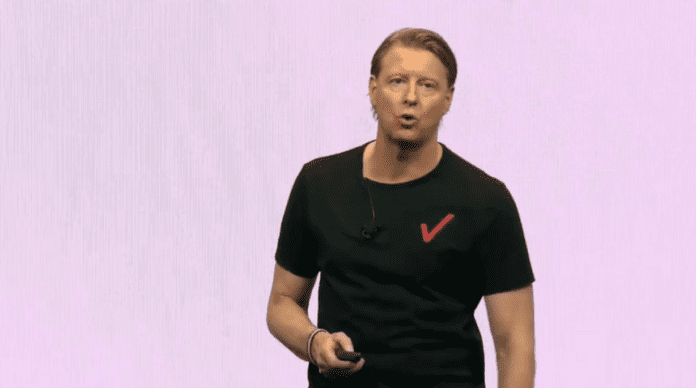Qualcomm and Ericsson hit 4.3 Gbps using millimeter wave 5G equipment
Verizon has been very bullish on 5G millimeter wave, beginning to roll out a fixed wireless service in 2018, and expanding to mobility finishing 2019 with high-band spectrum deployed in 31 markets. During an investors event this week in New York City, CEO Hans Vestberg detailed 2020 expansion plans, including both millimeter wave and the outlook for 5G in lower bands.
Vestberg has repeated called out dynamic spectrum sharing as key to Verizon’s nationwide 5G plans in that the technology allows for simultaneous transmission of LTE and 5G NR in the same band at the same time based on software upgrades to base stations and compatible handsets.
“This year we will launch nationwide 5G based on dynamic spectrum sharing,” he said. “We’re going to launch that when we think it’s commercially right,” which is largely a function of handset adoption. To the extent that it’s a barometer, Samsung’s recent Galaxy handset lineup all feature both 5G compatibility and DSS support, although it’s worth noting that two out of three new phones support sub-6 GHz and millimeter wave while the lowest-priced, the S20, just support sub-6 GHz.
In terms of network densification, Vestberg said in 2020 Verizon would deploy five times as many millimeter wave small cells as it did in 2019 in support of a 31-city network rollout.
“That will render more than 60 cities that will have coverage on millimeter wave by year-end 2020,” he said. “That of course tells you that we’re not only expanding markets but we’re also expanding coverage in all these markets we’re already into.”
On the fixed wireless front, Vestberg said the 5G Home service, which is aimed at consumers as well as small- and medium-sized business, will expand to 10 cities by year-end with that action coming in Q3 as compatible CPEs become more widely available. “There’s no reason to believe that all mobile markets on 5G millimeter wave will be [5G Home markets] sooner or later.”
All of this, he said, is covered by Verizon’s 2020 capex guidance in the $17 billion to $18 billion range, which is in the same ballpark as the 2019 spend.
Millimeter wave draws criticism due to its limited reach and inability to penetrate buildings. However, it’s what’s needed to provide the multi-gigabit experience so closely associated with 5G.
In fact, this week Ericsson announced it had achieved a downlink transmission speed of 4.3 Gbps in a laboratory environment. This test aggregated eight channels of millimeter wave spectrum, a total of 800 megahertz, using Qualcomm’s Snapdragon X55 5G Modem-RF System and the Ericsson Radio System Street Macro 6701. Ericsson said there’d be commercial network and terminal support available this year and called out use cases like multi-player gaming, augmented reality gaming and video streaming. The company also noted “opportunities for communications service providers to bring fixed wireless access to consumers, with cellular [millimeter wave] connectivity of up to four times faster than fiber.”

